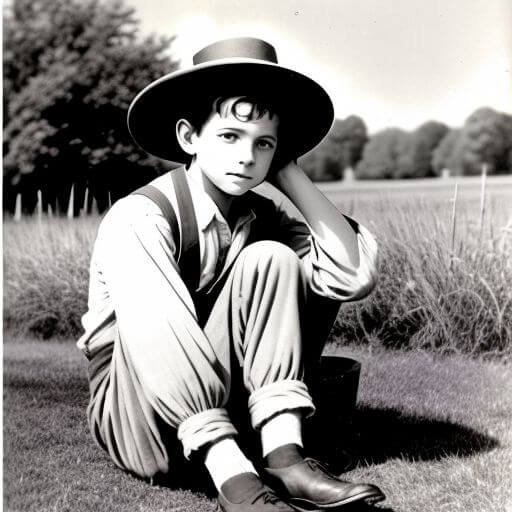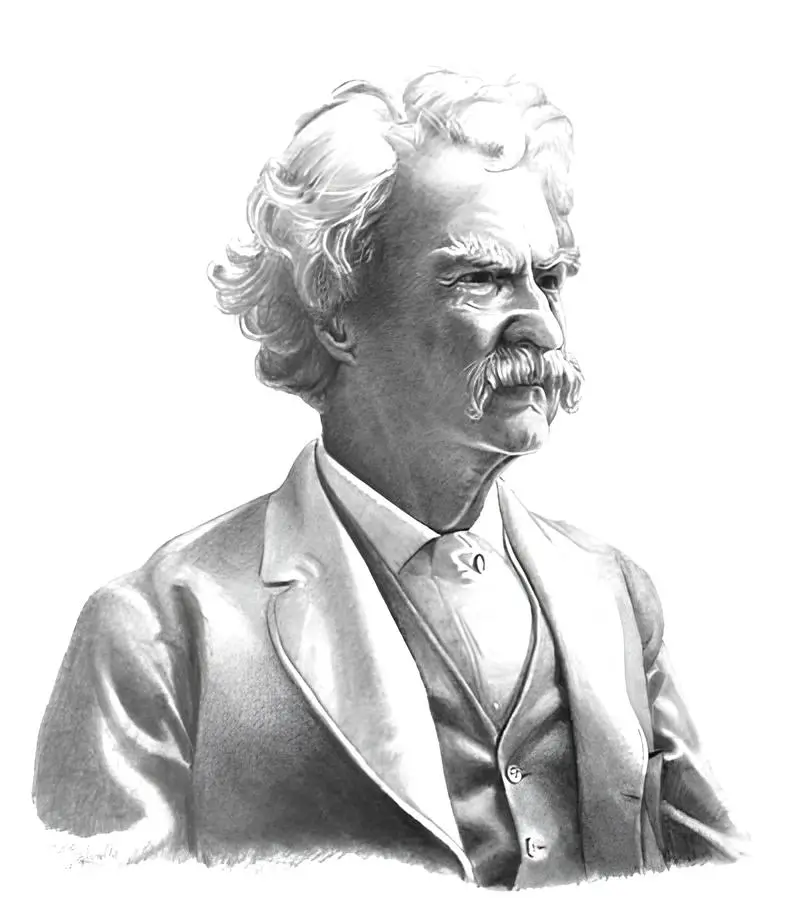“The Adventures of Tom Sawyer” by Mark Twain is a timeless classic that has captivated readers of all ages for generations. A blend of humor, adventure, and social commentary, this novel provides readers with a vivid snapshot of life along the Mississippi River in the mid-1800s. Whether you’re a student studying it for class, a teacher preparing lessons, or a book lover exploring classics, this comprehensive guide will give you everything you need to understand and appreciate this iconic work.
About the Author: Mark Twain and His Influence
Born as Samuel Langhorne Clemens, Mark Twain was a master storyteller and a sharp social critic. Widely recognized for his wit and keen understanding of human nature, Twain’s works often tackled themes of morality, childhood innocence, and societal hypocrisy. Published in 1876, The Adventures of Tom Sawyer is considered one of Twain’s most beloved novels and showcases his ability to combine lighthearted humor with profound commentary on human behavior. It also laid the groundwork for its celebrated sequel, The Adventures of Huckleberry Finn.
Chapter-by-Chapter Summaries and Analysis
Chapters 1–3
Tom Sawyer lives in St. Petersburg, Missouri, with his Aunt Polly and half-brother Sid. From the very start, we see Tom’s mischievous nature when he skips school, gets into a fight, and is punished by having to whitewash a fence. Ingeniously, Tom persuades other boys to do the work for him by making it seem like an exclusive privilege. This charming introduction establishes Tom’s cleverness, resourcefulness, and love for adventure.
Chapters 4–7
Tom’s romantic side is revealed when he falls for Becky Thatcher and tries to impress her in Sunday school by earning a Bible through trading trinkets. However, Tom embarrasses himself when he incorrectly names “David and Goliath” as disciples. Later, he wins Becky’s affection, only to inadvertently upset her by admitting he was previously engaged to another girl, Amy Lawrence.
Chapters 8–11
Tom teams up with his friend Huckleberry Finn, and the two witness a haunting crime in a graveyard, where they see the villainous Injun Joe murder Dr. Robinson. Overwhelmed with fear, the boys swear a blood oath of silence while an innocent man, Muff Potter, is wrongfully accused. These chapters exemplify Twain’s ability to intersperse childhood adventures with darker, more serious elements.
Chapters 12–17
Seeking freedom, Tom, Huck, and their friend Joe Harper run away to an island, playing pirates and relishing their independence. However, when they learn the townspeople believe they are dead, Tom hatches a plan to attend their own funeral. This section highlights the boys’ yearning for adventure and explores themes of mischief and loyalty.
Chapters 18–24
Tom redeems himself in Becky’s eyes by taking the blame for a school mishap. Meanwhile, Muff Potter’s trial begins, and Tom struggles with his guilt over keeping quiet. Ultimately, he testifies against Injun Joe, leading to the latter’s dramatic courtroom escape. These chapters showcase Tom’s moral growth and bravery.
Chapters 25–30
Tom and Huck, driven by their fascination with treasure, search for hidden gold in a haunted house. They accidentally discover that Injun Joe has already found a stash of gold. Meanwhile, Huck overhears a plot to harm Widow Douglas and courageously alerts help, cementing his role as an unconventional hero.
Chapters 31–35
The climax unfolds when Tom and Becky become lost in McDougal’s Cave, surviving days without food and light. During their ordeal, Tom stumbles upon Injun Joe hiding in the cave. The tale concludes with Joe’s death (trapped in the sealed cave) and Tom and Huck’s discovery of the treasure. Huck is adopted by Widow Douglas but reluctantly agrees to civilized life in exchange for future adventures with Tom.
Key Themes in The Adventures of Tom Sawyer
Adventure and Freedom
Tom and Huck’s escapades capture the essence of childhood freedom and adventure. Whether it’s running off to be pirates or hunting for treasure, the novel celebrates a world where imagination knows no bounds.
Societal Expectations
Twain critiques societal norms and hypocrisy through Tom’s mischievous actions and Huck’s rejection of “civilized” life. The tension between individual freedom and societal conformity is a recurring theme.
Friendship and Loyalty
The bond between Tom and Huck is central to the story. Despite their differences, their loyalty to each other is unshakable, demonstrating the importance of friendship through thick and thin.
Moral Growth
Tom’s evolution from a troublemaker to a courageous young boy who faces his fears and testifies against injustice reflects his moral development, making him a relatable and inspiring protagonist.
Character Analysis
Tom Sawyer
A charismatic and imaginative boy, Tom is mischievous yet endearing. His love for adventure, quick wit, and deepening sense of morality make him a multifaceted character who grows throughout the story.
Huckleberry Finn
The son of the town drunkard, Huck represents freedom and rebellion. He rejects societal norms and lives on the fringes, yet his loyalty, courage, and innate sense of justice shine through.
Becky Thatcher
Becky is Tom’s love interest and a representation of youthful innocence. Through her interactions with Tom, we see her as a spirited and compassionate character.
Aunt Polly
Tom’s strict yet loving guardian, Aunt Polly, struggles to discipline Tom while remaining deeply devoted to him. She represents the moral center of Tom’s world.
Injun Joe
As the antagonist, Injun Joe embodies danger and vindictiveness. His actions drive much of the plot’s tension, and his presence in the cave adds to the novel’s suspenseful climax.
Literary Devices and Twain’s Style
- Satire: Twain pokes fun at societal norms, from religion to education, through his clever use of satire.
- Symbolism: The Mississippi River symbolizes freedom and adventure, while McDougal’s Cave represents danger and the unknown.
- Imagery: Twain’s vivid descriptions bring St. Petersburg and its surrounding landscapes to life, immersing readers in the setting.
The Impact and Legacy of The Adventures of Tom Sawyer
Twain’s novel remains a literary treasure, beloved by readers worldwide. Its exploration of universal themes like childhood, morality, and societal hypocrisy makes it timeless. Beyond its entertainment value, the book has sparked discussions on race, class, and identity. It set the stage for its even more acclaimed sequel, The Adventures of Huckleberry Finn, cementing Twain’s legacy as one of America’s greatest authors.
Further Reading and Adventures Await
If The Adventures of Tom Sawyer has piqued your interest, why not explore more of Twain’s works or classics from the same period? Teachers may consider using supplementary materials to deepen students’ understanding of the book’s themes and cultural context.
Dive into the world of Tom and Huck today, and relive the adventures that have defined countless childhoods!





Leave a Reply